
Know the QLD Towing Regulations: Australian Trailer Towing Guide
Essential Australian Trailer Towing Tips & Tricks
Embarking on an adventure across the sprawling landscapes of Australia with a trailer in tow is like navigating a ship through uncharted waters – exhilarating yet fraught with challenges.
To ensure a smooth journey, equipping yourself with knowledge on towing laws, selecting the perfect companion for your vehicle, and mastering the art of connection and driving, become indispensable tools in your arsenal.
These elements are akin to a compass guiding you through the vast ocean of towing complexities.
For, without them, one may find themselves adrift in a sea of legal and safety predicaments.
Keep reading to uncover the vital tips and tricks that will render your trailer-towing voyage as seamless as the calm before the storm.
Key Takeaways
- Understanding and Adhering to State-Specific Towing Regulations Is Essential for Safe and Legal Trailer Use in Australia
- Matching the Trailer Type to Your Vehicle’s Towing Capacity Is Crucial for a Harmonious and Safe Journey
- Proper Hitching, Light Synchronization, and Vehicle-to-Trailer Communication Ensure Safety on the Road
- Mastering the Art of Driving With a Trailer Involves Practicing Acceleration, Braking, and Maneuvering Techniques
- Conducting Pre-Journey Checks, Including Tire Inspections and Load Distribution Assessments, Sets a Secure Foundation for Travel
Understanding Australian Towing Laws Before You Start
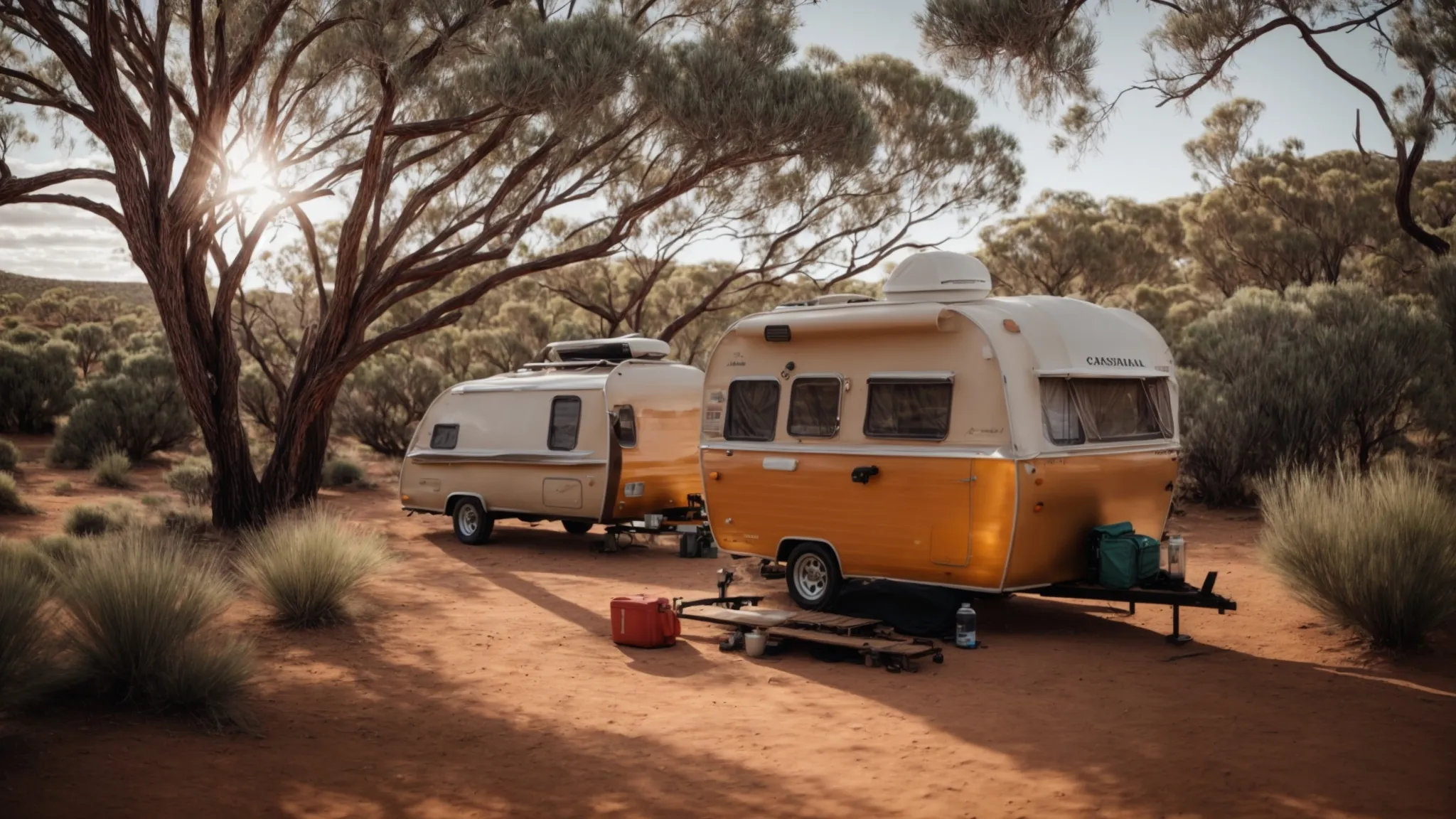
Embarking on a journey across Australia’s sprawling landscapes with a trailer in tow is no less an adventure than a captain navigating the uncharted waters.
Nevertheless, before setting sail into the vastness, it’s paramount to anchor oneself with comprehensive knowledge of the Australian towing labyrinth.
The laws guiding this venture, likened to a compass, vary as one traverses from state to state, much like the changing tides.
Therefore, embarking on this odyssey necessitates not just a familiarity with the overarching national regulations, but also a deep dive into the specific requirements dictated by each state.
This crucial step ensures that your voyage through the scenic routes of Victoria, the bustling streets of Sydney, or the cultural mosaic of Melbourne remains not just exhilarating but above all, compliant with the law.
Familiarize Yourself With National Regulations
Navigating the complexities of national regulations is akin to unraveling a tightly wound rope before embarking on a sea voyage. It’s the first crucial step in ensuring that your journey with a trailer in Australia is not only lawful but safe for you and others on the road.
My quest to master the essentials of Australian trailer towing led me to pore over the national guidelines that serve as a backbone to the state-specific rules. Acknowledging these foundational laws is like planting your feet firmly on the ground before attempting to climb a steep hill – necessary and reassuring.
Check State-Specific Towing Requirements
Just as a ship’s captain must understand the nuances of the waters he sails, so too must a trailer owner grasp the specifics of towing regulations that ripple across Australia’s states and territories: Queensland, Victoria, New South Wales, and beyond. Each state whispers its own set of rules, an ensemble of legal frameworks that can befuddle even the most seasoned travelers.
| State | Key Towing Regulations |
|---|---|
| QLD (Queensland) | QLD trailer regulations, caravan towing regulations QLD, towing regulations QLD |
| VIC (Victoria) | Vehicle tow guide, specific trailer specifications applicable |
| NSW (New South Wales) | Australian trailer towing guide, advice on safe trailer use |
Peering into the intricacies of these state-specific guidelines, I embark on a meticulous quest to ensure that my trailering adventures adhere to the legal tapestry of the land. Whether it’s consulting the Queensland’s towing regulations, beholding the tailored advice within Victoria’s vehicle tow guide, or navigating through New South Wales’ comprehensive Australian trailer towing guide, my journey is steadfastly guided by the maxim: knowledge empowers compliance.
Now that we’ve navigated the labyrinth of Australian towing laws, let’s embark on an equally thrilling adventure: finding the perfect trailer that complements your vehicle like wine to cheese. Strap in, because this journey promises to be as enlightening as it is exhilarating!
Selecting the Right Trailer for Your Vehicle
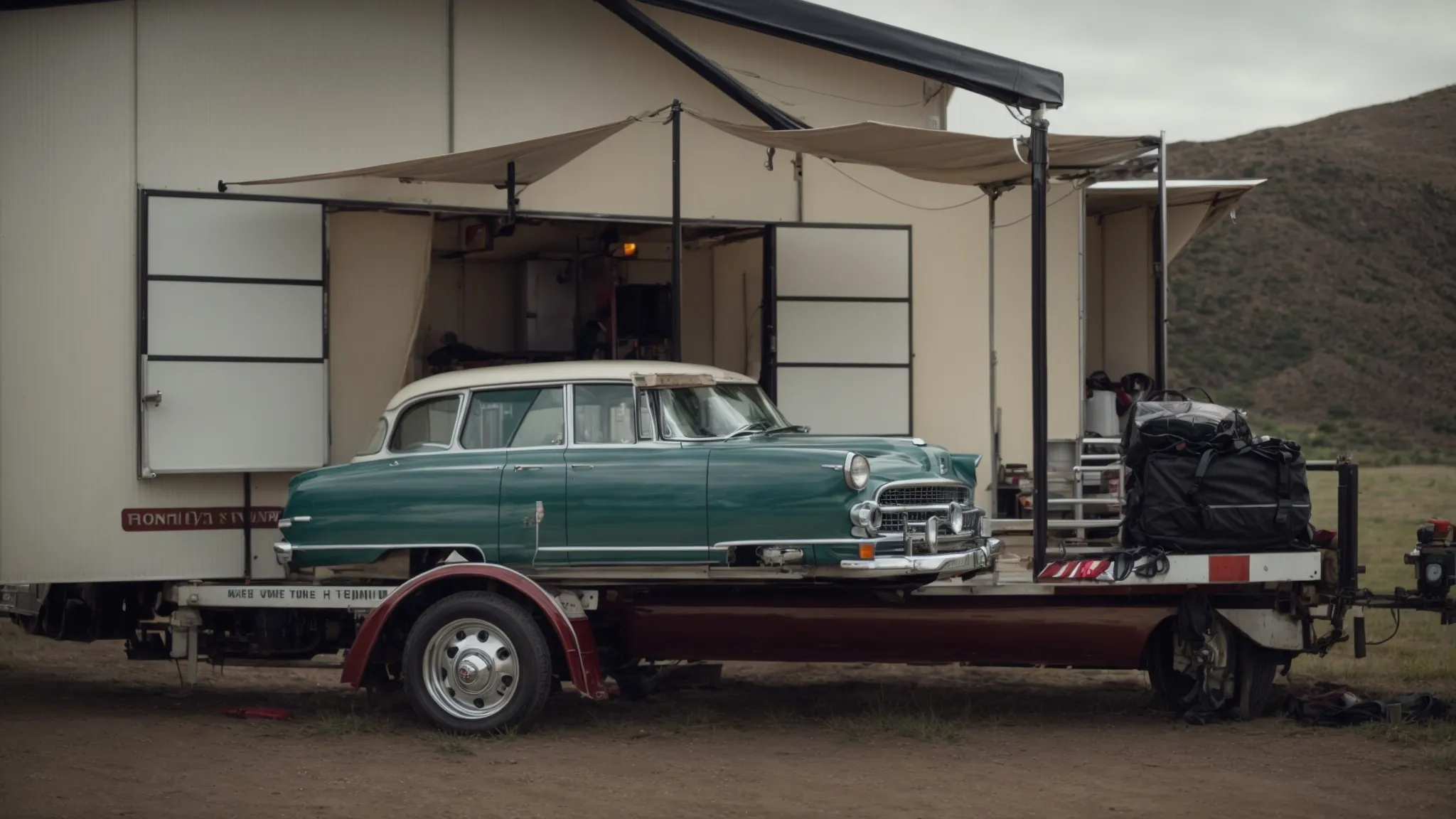
Embarking on the arduous yet rewarding quest of trailer towing is akin to drafting a pact with your vehicle, wherein mutual understanding of capacity and needs is imperative.
Forecasting the journey ahead requires a fine blend of foresight and wisdom.
Matching the trailer type to your vehicle’s towing capacity emerges as the cornerstone of this alliance.
It’s about striking a delicate balance, ensuring the chariot you choose to harness to your steed is neither a featherweight nor a burdensome titan.
This essential step, coupled with a conscientious evaluation regarding the purpose and weight of the trailer, is akin to choosing the right sail for your ship; too light, and you won’t carry all necessary cargo, too heavy, and you risk sinking.
With a careful analysis and the right choice, the path ahead becomes not only smoother but also tailored to the unfolding adventures.
Match the Trailer Type to Your Vehicle’s Towing Capacity
Ensuring your vehicle’s strength matches the heft of the trailer it pulls is akin to finding the perfect dance partner; it’s about harmony and understanding limits. As I consult the vehicle tow guide, my focus sharpens on the maximum towing capacity of my car, ensuring it is not outmatched by the weight of the trailer, be it a robust tandem trailer or a sleek car carrier. This scrutiny is not just about legality; it’s the bedrock of safety on our open roads.
My exploration into the right trailer for my vehicle illuminates the importance of a symbiotic relationship between the two. Delving into the complexities of towing capacity and trailer specifications within Queensland, Victoria, and New South Wales, I understand that the harmony between vehicle and trailer capacity is not just a recommendation but a necessity. This insight ensures my journey remains within the bounds of both safety and legal compliance, letting me navigate Australia’s scenic routes with confidence and ease.
Consider the Purpose and Weight of the Trailer
Assessing the purpose and weight of the trailer you intend to hitch to your vehicle illuminates the pathway to a secure and harmonious journey: It’s about painting the picture of your travel mosaic with careful strokes. Whether embarking on a cross-country adventure requiring a sturdy car carrier or a local landscaping project needing a lighter mower trailer, this evaluation steers the course of your decision-making process, ensuring your trailer is not just an accessory but a reliable partner on your journey.
| Trailer Use | Recommended Trailer Type |
|---|---|
| Cross-country Adventure | Car Carrier |
| Landscaping Project | Mower Trailer |
Moreover, factoring in the weight not only typifies foresight but embodies prudence: it’s akin to choosing the right gear for a mountain expedition. Understanding that each kilogram adds to the gravitational pull between your vehicle and the trailer transforms this step into a critical safety measure, ensuring that the dance between your vehicle and its towed companion remains elegant and, above all, safe.
With the right trailer chosen, a new journey begins. Let’s strap in and connect your world of adventure safely to your vehicle.
Properly Connecting Your Trailer to Ensure Safety
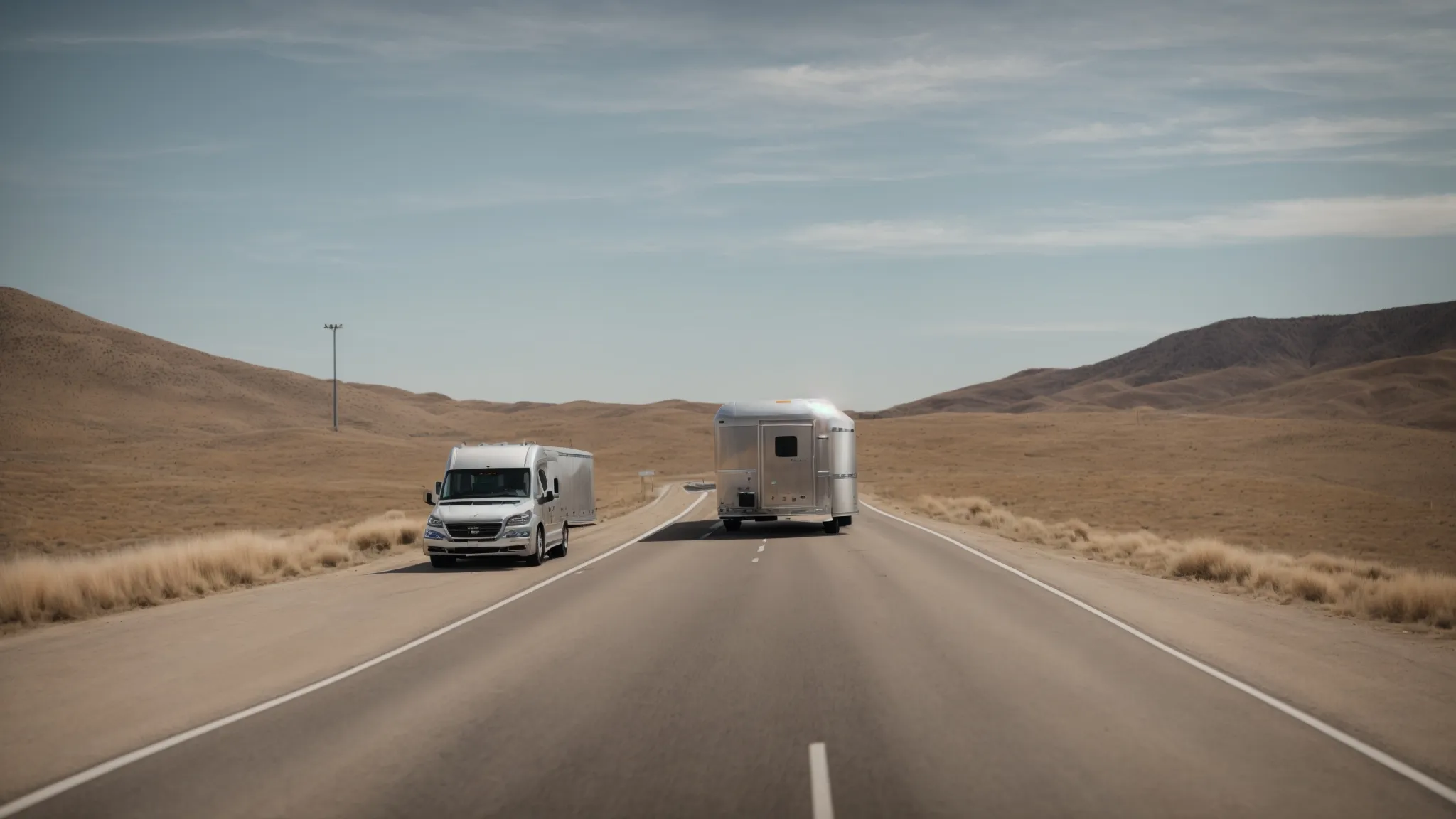
Entwining your vehicle with a trailer is more an act of precision than mere attachment – a fine ballet that ensures not just the journey, but also the safety of all.
Guided by centuries-old principles much like the mariner’s compass, the process demands meticulous attention at every turn.
It begins with a step-by-step hitching process that stands as the cornerstone of a secure connection, a ritual as sacred as any ancestral rite.
Following this, the synchronization of all lights and signals between trailer and vehicle illuminates the path ahead, ensuring our journey is visible not just to our own eyes, but to those we share the road with.
This isn’t just about connecting two pieces of machinery; it’s about crafting a bond that withstands the trials of travel, ensuring the safety and harmony of our shared roads.
Follow a Step-by-Step Hitching Process
Embarking on the meticulous journey of hitching a trailer to a vehicle becomes my rite of passage, ensuring that the legacy of safety I carry on the road is as robust as the connections I forge. With hands guided by precision and a keen eye for detail, I delve into a ritual where every action, from aligning the tow ball to securing the coupling, is performed with the reverence of a craftsman joining two pieces of a timeless puzzle.
As I stand amid the quiet before the journey begins, ensuring the chains are crisply crossed beneath the coupling and the brake and signal lights echo each other’s intentions between vehicle and trailer, I recognize this process as a symphony. It’s a harmonious blend of actions and checks, where every step, from connecting the electrical plug to adjusting the mirrors, becomes a critical note in the composition of a safe and secure voyage across Australia’s captivating terrains.
Verify All Lights and Signals Are in Sync
Ensuring that all lights and signals are in perfect harmony between your trailer and vehicle is like aligning stars in the galaxy: essential for clear communication on the road. This critical check, embodying both safety and respect for fellow travelers, transforms a simple connection into a beacon of mutual understanding.
| Lightning Component | Checklist Item |
|---|---|
| Rear Lights | Ensure they match vehicle’s signals |
| Brake Lights | Test for immediate response |
| Indicator Signals | Verify synchronization with vehicle |
| Reverse Lights | Check for clear visibility and function |
As the final step before embarking on any journey, this verification acts as the seal on a pact between you, your vehicle, and the road. It’s not just a legal requirement but a testament to meticulous preparation, ensuring that as twilight blankets the landscape, our passage through it is lit by clarity and anticipation of safe travels ahead.
Securing your trailer is just the beginning; the real adventure lies ahead. Let’s shift gears and explore how mastering safe driving techniques can amplify your towing experience.
Mastering Safe Driving Techniques While Towing

Sailing through the seas of asphalt with a trailer hitched to your vehicle introduces new challenges to the art of driving, akin to a seasoned sailor adapting to the capricious nature of the winds.
I quickly discovered that mastering this craft goes beyond mere understanding of laws and technical specifications; it is about developing a symbiotic relationship with your vehicle and its extended burden.
Hence, I dedicated myself to practice and perfection, focusing on the finesse required in accelerating and braking with the added weight of a trailer, and navigating the intricate dance of turns and reverses.
This journey of mastery is not just about ensuring safety but also about embracing the finesse of maneuverability, promising a seamless voyage across the varied landscapes of Australia.
Practice Accelerating and Braking With Added Weight
Grasping the reins of a vehicle towing a hefty trailer demands an understanding that the dynamics of driving transform significantly: It becomes a dance where every movement requires grace and strength. The act of accelerating, with the added weight, feels akin to urging a slumbering giant into motion, a process that demands patience and a gradual increase in power to prevent jarring starts or strain on the towing mechanism.
| Technique | Purpose |
|---|---|
| Gradual Acceleration | Reduce Strain on Towing Mechanism |
| Smooth Braking | Prevent Trailer Sway |
Braking, too, becomes an art of anticipation, where the inertia of the trailer asserts its presence felt through a delayed halt. Mastering this involves not just a firmer press of the pedal but also giving oneself a generous distance to come to a stop, transforming what was once an unconscious action into a thoughtful ballet of force and timing, ensuring both safety and the integrity of the journey.
Learn How to Manoeuvre Through Turns and Reverses
Embarking on the intricate task of maneuvering a trailer through tight bends and stubborn reverses, I likened my vehicle to a seasoned dancer, acutely aware of its extended silhouette. The challenge of turns whispered a lesson in gentleness, urging me to navigate with a wider berth, ensuring the trailer’s path avoided the treacherous kiss of curbs and obstacles. It was a dance of precision, where every movement was a deliberate stride towards mastery.
Similarly, the art of reversing with a trailer became a testament to patience and perspective. I learned to embrace the counterintuitive dance, where turning the wheel left guided the trailer right and vice versa, a poetic interplay of mirrors and reverse gears. This maneuver, once daunting, transformed into a fluid motion under the tutelage of practice, a skill refined under the watchful eye of perseverance and respect for the road’s rhythm.
Mastering safe driving techniques while towing unlocks a new level of road mastery. Up next, let’s gear up for adventure by ensuring our chariot is primed for the journey.
Essential Checks Before Every Trip
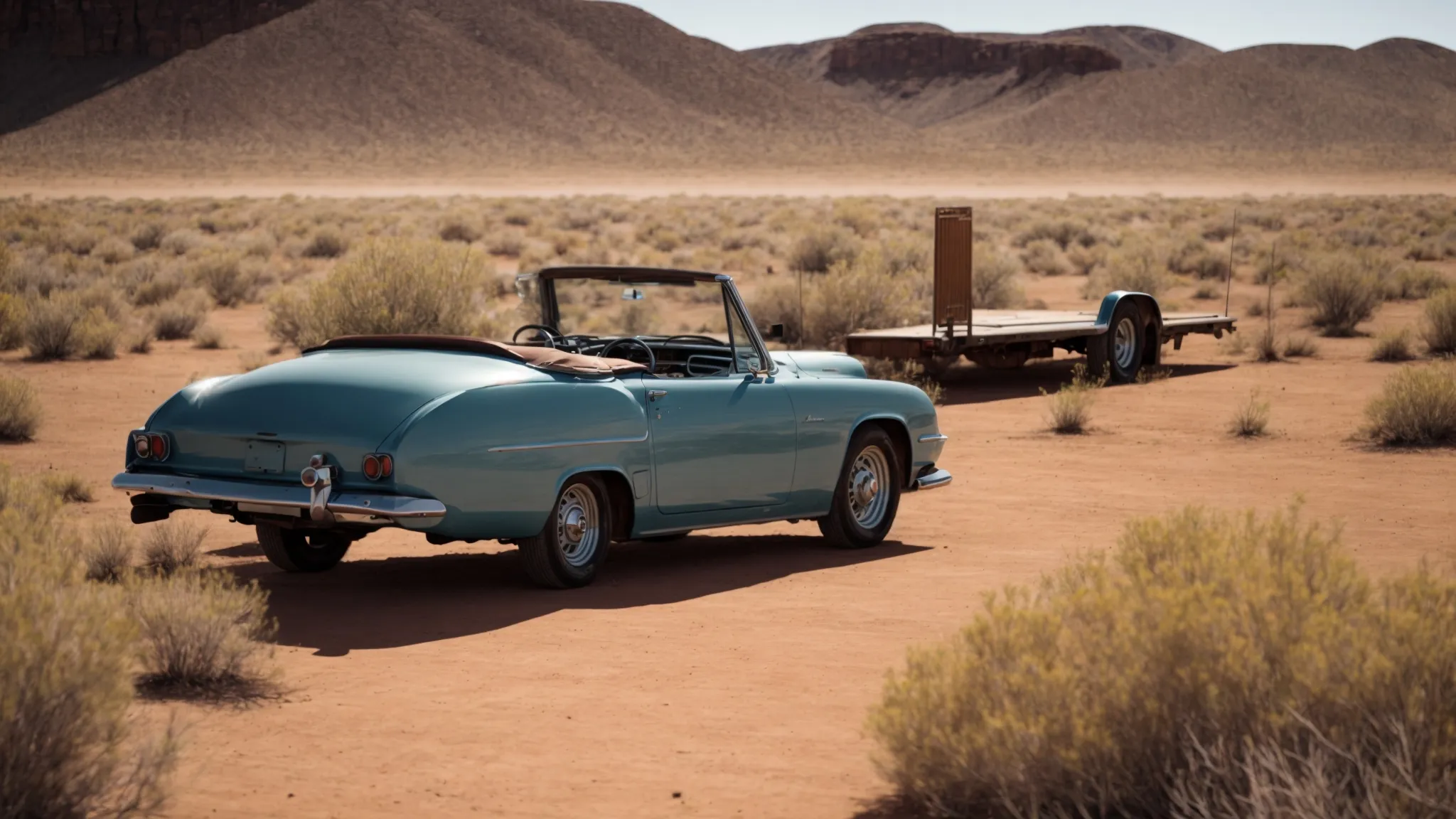
Embarking on a journey towing a trailer across Australia’s breathtaking landscapes demands not just a spirit for adventure but a commitment to meticulous preparation.
It’s paramount that before your wheels kiss the open road, you conduct a series of essential checks to fortify the safety and reliability of your journey.
This begins with a keen examination of tire pressure and condition, both for the vehicle and the trailer, ensuring they’re in prime condition to shoulder the burden of your travel dreams.
Equally critical is the task of double-checking connection points and load distribution—an art of balance and precision that ensures your trailer is not just an extension, but a harmonious part of your vehicle.
These initial steps, like the first brushstrokes on a canvas, set the tone for a journey where security and tranquility travel hand in hand.
Inspect Tire Pressure and Condition on Both Vehicle and Trailer
Before my vehicle’s tires whisper against the dust of open roads, a ritual unfolds under my watchful gaze: the inspection of tire pressure and condition on both my vehicle and trailer. This act, more than just precaution, is a dialogue with the road ahead, ensuring that each tire, a faithful sentinel, stands ready to bear the weight of our shared journey.
Ensuring the health of these circular foundations, my hands navigate the grooves and surfaces, seeking signs of wear or distress. This tactile conversation between man and machine serves not just as a preventative measure, but as a testament to the respect and care invested in the journey we embark upon, promising a smoother passage through the diverse tapestry of Australia’s landscapes.
Double-Check Connection Points and Load Distribution
Before I signal my departure, a ritual paramount to my pre-journey preparations unfolds: the meticulous double-checking of connection points and load distribution. This step, ingrained in my routine, is akin to ensuring the bindings of a trusty tome are secure, ready to withstand the tales of travel that lie ahead.
With the vigilance of a seasoned artisan, I assess the harmony between my vehicle and trailer, ensuring the dance of load distribution is balanced to perfection. This not only fortifies the safety of my voyage but also augments the integrity of my vehicle’s performance, casting a veil of reassurance over my adventures on Australia’s roads.
Conclusion
The importance of adhering to essential Australian trailer towing tips and tricks cannot be overstated.
Mastering nationwide and state-specific regulations ensures legal compliance and safety as you traverse the diverse terrains of Australia, from Queensland’s coastlines to the bustling streets of Sydney.
Properly matching your vehicle’s towing capacity with the right trailer type prevents potential hazards, highlighting the significance of understanding both the purpose and weight of your trailer for a harmonious journey.
Moreover, ensuring a secure connection and synchronizing all lights and signals between your vehicle and trailer acts as a fundamental precaution, safeguarding not just your journey but also those sharing the road with you.
Additionally, honing safe driving techniques, such as mastering acceleration, braking with added weight, and gracefully maneuvering through turns and reverses, emphasizes the nuanced skills required for towing.
Conducting essential pre-trip checks, including tire inspections and verifying load distribution, is crucial for maintaining both the safety and integrity of your voyage.
Collectively, these tips and tricks form the cornerstone of a successful and enjoyable towing experience in Australia, blending meticulous preparation with respectful acknowledgment of the road’s challenges and beauty.
Author
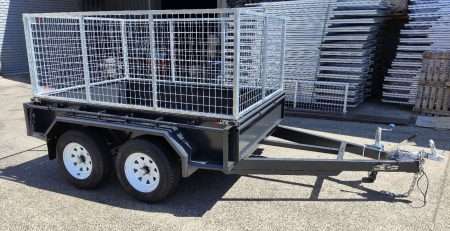
How to Mount a Spare Tire on Your Trailer: A Simple Step-by-Step Guide
Trailer service centers receive over 1 million phone calls and 1.3 million emails each year about trailer maintenance problems....
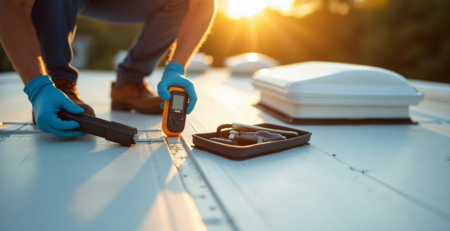
How to Fix RV Roof Leaks: Simple Roof Leak Detection Guide for Beginners
Did you know DIY RV roof repairs can cost under $50? But undetected leaks could lead to substantially higher repair...
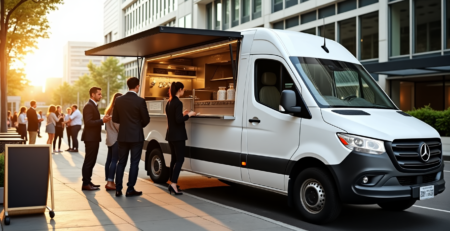
Starting a Food Truck Business in Australia: From Trailer Selection to Launch
The Australian mobile food market has evolved into a billion-dollar industry. This makes a food truck...
